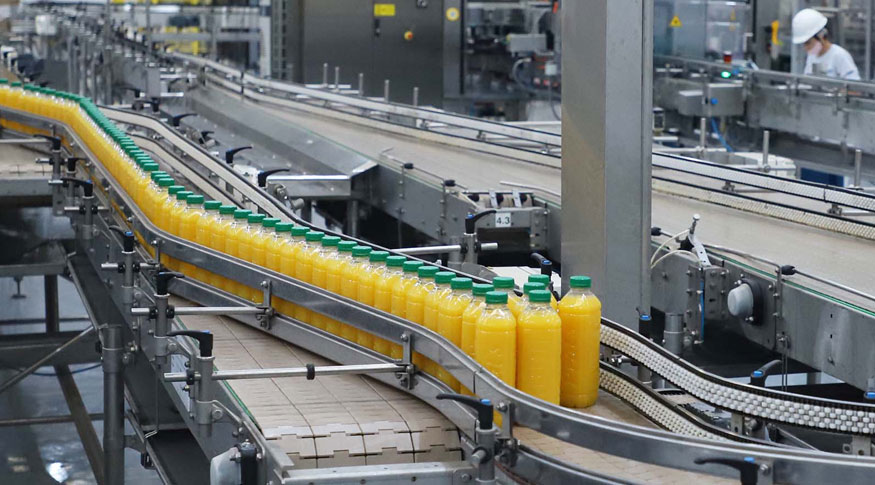PIMPFBR
Industrial production falls 1.3% in July, standing below the pre-pandemic level
September 02, 2021 09h00 AM | Last Updated: September 03, 2021 05h30 PM

The industrial production fell by 1.3% from June to July, after falling by 0.2% in the previous month. With the result, the industry accumulates a fall of 1.5% in two months, after a rise of 1.2% in May. The data are from the Monthly Survey of Industry (PIM), released today (September 2) by the IBGE. In the year, the industry accumulates an increase of 11% and, in twelve months, of 7%. With the July's result, the industrial production stood 2.1% below the pre-pandemic level, February 2020.
July’s retreat reached two of the four major economic categories and 19 of the 26 segments surveyed. “Broadly speaking, July’s behavior does not differ much from what we’ve seeing along the year, since of the seven months, in five there was decrease”, explains Mr. André Macedo, survey manager. According to him, this result remains correlated to the Covid-19 pandemic effects. “In the beginning of the year, there were longer shutdowns and greater sanitary restrictions in some places, which affected the production process. As vaccination advanced and relaxation of measures took place, the industrial production has felt the effects of rising costs and disarrangement of the whole productive chain.”, he says, stressing that in January 2021, the industrial production even reached 3.5% above the pre-pandemic level.
The effects of the domestic demand also contributed to the result. One of the most important negative influences of July’s industrial production was that of the sector of beverages, which fell 10.2%, interrupting three months of consecutive positive rates, accumulating a 11.7% high. Another sector that influenced the result was food products, with decrease of 1.8%, the second in a row, accumulating a loss of 3.8%.
“People are having difficulty finding a job, with an important amount of persons out of the labor market, the precariousness of jobs and the retraction of the wage bill, as revealed by the Continuous National Household Sample Survey (PNAD), released on Tuesday (August 31) by the IBGE, says Mr. Macedo, also emphasizing the contribution of the inflationary process which has been reducing the income of families and their daily consumption, as shown by the Extended National Consumer Price Index (IPCA), released some weeks ago by the IBGE. “Industry’s result is under the scope of the results of income, employment, inflation shown by the other surveys”, he claims.
Other relevant negative contributions for PIM’s result in July came from the sectors of motor vehicles, trailers and bodies (-2.8%), machinery and equipment (-4.0%), other transportation equipment (-15.6%) and of mining and quarrying industries (-1.2%). Among the seven activities with production growth, coke, petroleum products and biofuels (2.8%) exerted the main positive impact, with the third month in a row of advance, accumulating, in this period, 10.2% of increase.
Among the major economic categories, there were decreases in durable consumer goods (-2.7%) and intermediate goods (-0.6%), with the former setting the seventh consecutive month of drops and accumulating in the period a loss of 23.4%, and the latter, retreating 3.2% in the fourth consecutive month of decrease. The sectors of capital goods (0.3%) and of semi- and non-durable consumer goods (0.2%) had positive results with the former setting the fourth consecutive expansion (total of 5.9% in the period) and the second returning a small part of the 1.7% drop in June.
Compared to July 2020, production increased 1.2%
Compared with the same month of 2020, the industrial sector grew 1.2%, with positive figures in two out of the four major economic categories, 14 out of the 26 sectors, 46 out of the 79 groups and 54.4% of the 805 products surveyed. It is worth mentioning that July 2021 had one less business day than July 2020 (22 against 23).
Among the activities, the main positive influences came from motor vehicles, trailers and bodies (21.2%), basic metals (24.8%) and machinery and equipment (26.2%).
Among the twelve activities dropping, food products (-10.3%) exerted the sharpest negative influence. Among the negative contributions, the highlights were beverages (-15.2%), mining and quarrying industries (-2.7%) furniture (-14.4%), toiletries, soaps, cleaning products and personal hygiene products (-9.8%), computer equipment, electronic and optical products (-7.1%) and machinery, apparatus and devices.
André Macedo claims that those rates are mostly due to the mow basis of comparison, since in 2020 the industrial production was very affected by the social isolation to stop the spread of the Covid-19 pandemic and reached historic negative levels.
More on the survey
PIM Brazil has been producing short-term indicators since the 1970s regarding the behavior of the real product of the mining and quarrying and manufacturing industries. From May 2014, the release of a new series of monthly industrial production indices began, after a reformulation to: update the sample of activities, products and respondents; prepare a new weighting structure for the indices based on the most recent industrial statistics, in order to harmonize with the needs of the implementation the National Accounts Series - reference 2010; and to adopt the new classification of activities and products used by other industry surveys from 2007 onwards, namely: the National Classification of Economic Activities - CNAE 2.0 and the List of Industrial Products - PRODLIST-Industry.
The survey results can also be consulted in the Sidra database.


















